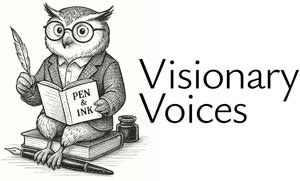Summary: Inspired by Your Next Five Moves by Patrick Bet-David, this article reframes nonprofit leadership through bold, unapologetic strategy—not survival. It’s for leaders who want impact, not inertia. It separates those in denial from those ready to take action. And if you’re not a CEO? Read it anyway. You’ll understand how real leadership thinks—and become one faster. If you’re tired of playing checkers in a chess world, it’s time to think five moves ahead. Your mission deserves nothing less.
Think Like a Grandmaster or Get Played
I recently read Patrick Bet-David’s book, Your Next Five Moves. It’s written for entrepreneurs and CEOs in the business world—but as I was reading, it struck me: This is exactly what nonprofit leaders need, too.
Except they rarely hear it.
So here it is. Adapted, translated, and maybe a little uncomfortable.
You may not be used to this kind of tone—especially if you’ve spent years in donor stewardship circles and conference panels telling each other how great things are going (even when they’re not).
But you know what? This post isn’t for your development intern. It’s not for your board’s “wellness subcommittee.”
This is strictly for nonprofit leadership: CEOs, executive directors, and founders. If that’s you, or if that’s who you aspire to be, read on.
If not? Bookmark it. Come back when you’re ready to become a grandmaster, rather than just another piece on the board. (If you’re a fan of no-nonsense business books, you should also read: Choose Your Enemies Wisely: Business Planning for the Audacious Few.)
Move 1: Know Thyself (and Your Nonprofit)
Clarity is your unfair advantage. It’s power. If your nonprofit can’t explain what it does better than anyone else in one sentence, you’re not leading—you’re treading water.
Are you a visionary disruptor, a legacy operator, or a fundraising engine? Most nonprofits confuse activity with impact and wear complexity as a badge of honor. But clarity builds confidence and attracts support.
Case Study: charity: water differentiated itself instantly with one powerful message: “100% of public donations fund clean water projects.” That clear, bold positioning helped them break through donor fatigue and become a global force.
Another example: DonorsChoose distilled their mission to a single action: “Support a classroom. Build a future.” This clarity empowered donors to act quickly and consistently.
Prompt: Can your board, staff, and top donors all describe your mission in one sentence—without prep? If not, your first move is a clarity audit. Host a staff workshop. Audit your About page. Interview 3 donors. See where alignment fails.
Move 2: Think Like a Strategist, Not a Martyr
Mission is emotional. But execution requires strategy. In other words, emotion drives your mission—but strategy drives your outcomes.
Many nonprofits operate in survival mode—reacting to budget changes, donor whims, board drama, and internal politics instead of planning for long-term impact. Too often, they treat every challenge as a systemic injustice that can be solved with another roundtable or equity statement—when what they really need is a game plan and a calendar.
Stop chasing every opportunity. Start designing a future. Conduct a SWOT analysis like a business would. Set 3-, 5-, and 10-year goals. Build best-case and worst-case scenarios—and assign actual deadlines. Be relentless about what doesn’t matter. Effective nonprofit leadership is about thinking ahead, not just reacting.
Case Study: Grameen Foundation took microfinance from concept to global impact by ignoring noise and staying committed to scalable strategy. Their founder, Muhammad Yunus, turned a simple idea into a Nobel Peace Prize-winning movement by thinking in decades, not quarters.
Common Objection: “But our board won’t approve it.” Answer: Then your board isn’t aligned with your mission. A strong board enables leadership—it doesn’t neuter it.
Strategic Tools:
- SWOT matrix (Strengths, Weaknesses, Opportunities, Threats)
- Scenario planning worksheet
- Quarterly Objective Scorecard (QOS)
Leadership isn’t about reacting faster. It’s about eliminating noise before it enters the system.
Move 3: Build a Team That Can Win
Most nonprofits prioritize resumes and “culture fit” over results. But if you’re serious about impact, hire for grit, intelligence, and execution—not comfort.
You’re not building a family. You’re building a team that can win. That means:
- Interviewing for problem-solving, not politeness
- Auditioning roles with real-world tasks before hiring
- Prioritizing output and adaptability
Sample Interview Question: “Tell me about a time you achieved results with minimal direction. How did you structure your plan?” This question filters out dependency and signals self-leadership.
Case-in-point: One development team tripled their planned giving leads by outsourcing their legacy web infrastructure and shifting internal energy toward relationship-building. Our Legacy Micro Planned Giving Websites helped them systematize outreach while freeing bandwidth for major gift stewardship.
Self-Test: If you took a 30-day sabbatical, would the team grow—or drift?
Move 4: Design for Scale (Even If You’re Small)
You don’t need to be big to think big. Scale isn’t about size—it’s about systems.
Scrappy is fine for a startup. But when “scrappy” becomes a permanent identity, your team ends up duct-taping the same leaky pipe every quarter. Smart nonprofits design once, replicate often.
The nonprofit sector is riddled with organizations that wear smallness like a badge of honor: “We’re scrappy,” “We keep overhead low,” “We’re like family here.” Some even mistake inefficiency for moral purity—as if scaling up means selling out. It doesn’t. It means your nonprofit leadership cares enough to get serious.
None of that scales.
What scales? Repeatable systems. Process clarity. Mission discipline.
That means documenting everything that works, removing what doesn’t, and avoiding the trap of reinventing every wheel for every grant cycle.
This is where fund development suffers most. Too many teams are stuck rewriting legacy messaging or chasing custom gift agreements.
Smart nonprofits don’t reinvent legacy giving—they systematize it. Especially when one can have a planned giving website for only $995.
Case Study: Feeding America scaled their impact not by adding more people, but by engineering supply-chain logistics that mirrored commercial freight systems. They treated food insecurity like a systems challenge—not just a fundraising one.
Another Example: Room to Read created a replicable literacy model, then expanded into dozens of countries with a consistent framework. They avoided custom program sprawl and invested in model fidelity.
Tactical Framework:
- Document your top 3 high-leverage processes
- Create step-by-step SOPs (standard operating procedures)
- Outsource or delegate based on complexity vs. ROI
LegacyPlanner™ is built exactly for this purpose—to systematize legacy planning without staff bottlenecks.
Move 5: Master Power Plays
The nonprofit sector avoids power language. But funders understand power. Policymakers use power. And if you’re in nonprofit leadership, you need to learn it, too.
Power isn’t manipulation—it’s mission leverage. It’s influence. It’s thinking about your next five moves. And behind every major gift, capital campaign, and multi-year grant is a power dynamic someone understood better than you did.
Framework:
- Clarity: Know your non-negotiables
- Positioning: Be seen as essential, not optional
- Boundaries: Say no to distractions, even when they come with checks
Case Study: Environmental Defense Fund (EDF) shaped corporate environmental policy by co-opting business tools instead of fighting them. They didn’t just shout—they shaped legislation. In fact, EDF has a history of working with businesses to find mutually beneficial solutions, influencing policy through partnerships and strategic engagement, rather than solely through adversarial tactics.
Mini-Scenario: A mid-sized nonprofit declined a restricted six-figure gift that would have reshaped their mission. Three months later, a national foundation awarded them $1.2M unrestricted—specifically citing their clarity and boundaries as reasons for trust.
Want to be seen as a leader? Leaders say no. Followers say thank you and hope for more.
Your Board Will Hate This (At First)
Nonprofit boards often value harmony over momentum. That’s understandable—but dangerous. Most great CEOs had to push past inertia, institutional memory, and status quo guardians.
Pushback You’ll Hear:
- “That’s not how we do things.”
- “We’ve tried that before.”
- “Our donors won’t go for it.”
Your Response: “What got us here won’t get us there.” If your board cannot support clarity, strategy, or scale—they are misaligned with your mission.
Final Thought: Think Like a CEO, Not a Caretaker
This isn’t about abandoning values. It’s about matching your mission with bold momentum. The biggest danger is not failure—it’s irrelevance.
Business leaders think in moves. Nonprofit leaders too often think in months. That’s not a funding problem—it’s a leadership one.
You’re not running a bake sale. You’re building a legacy.
What Are Your Next Five Moves? A 30-Day Nonprofit CEO Challenge
- Week 1: Run a brutally honest SWOT analysis
- Week 2: Identify one donor or board process to systematize
- Week 3: Redefine or replace one underperforming role
- Week 4: Practice one power play—say no or reset terms with clarity
Pro Tip: Treat this post like a boardroom workbook. Assign a move per week. Your fifth move will be running a debrief session in 30 days. Watch how your nonprofit leadership shifts.
And no, you probably won’t be the most popular person in the room. But you’re not here to win popularity contests—you’re here to win trust, drive results, and build something that outlasts applause. Leadership isn’t about making everyone comfortable. It’s about making everyone better.





